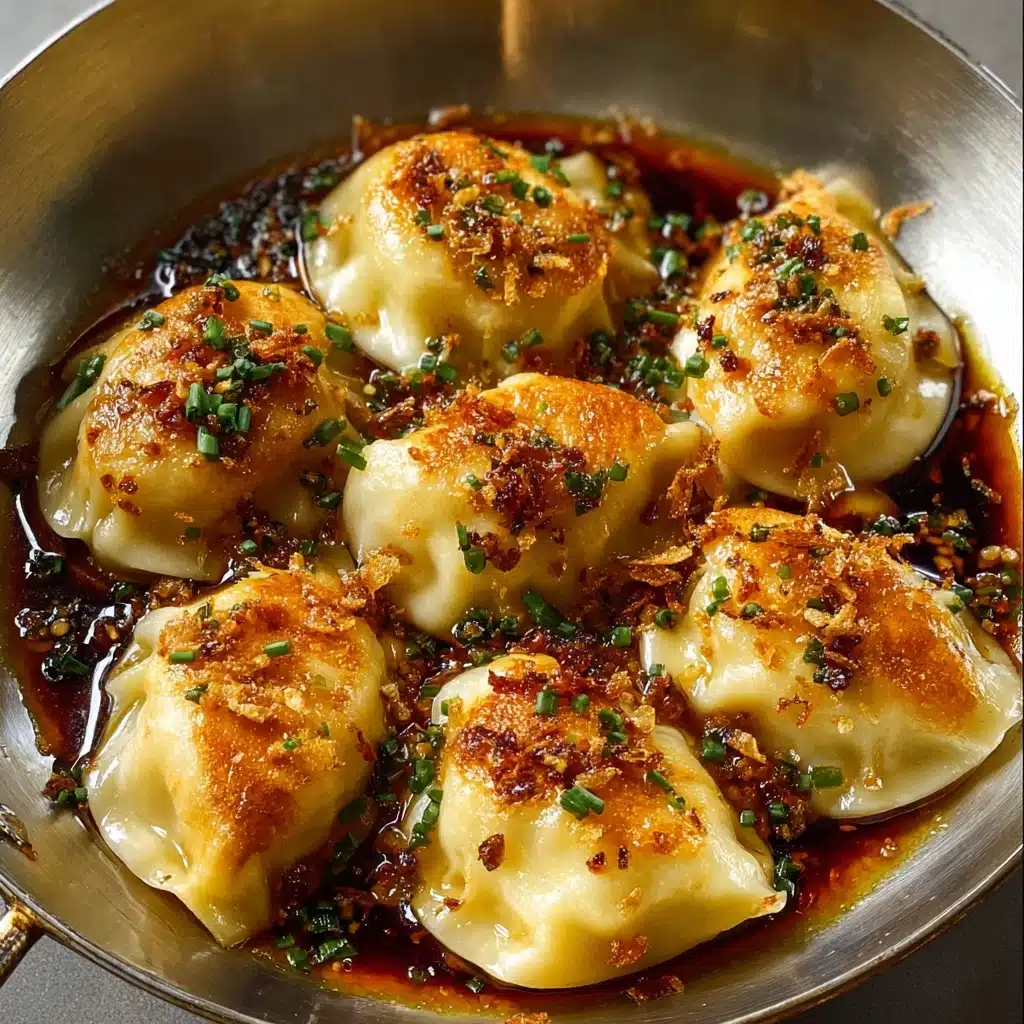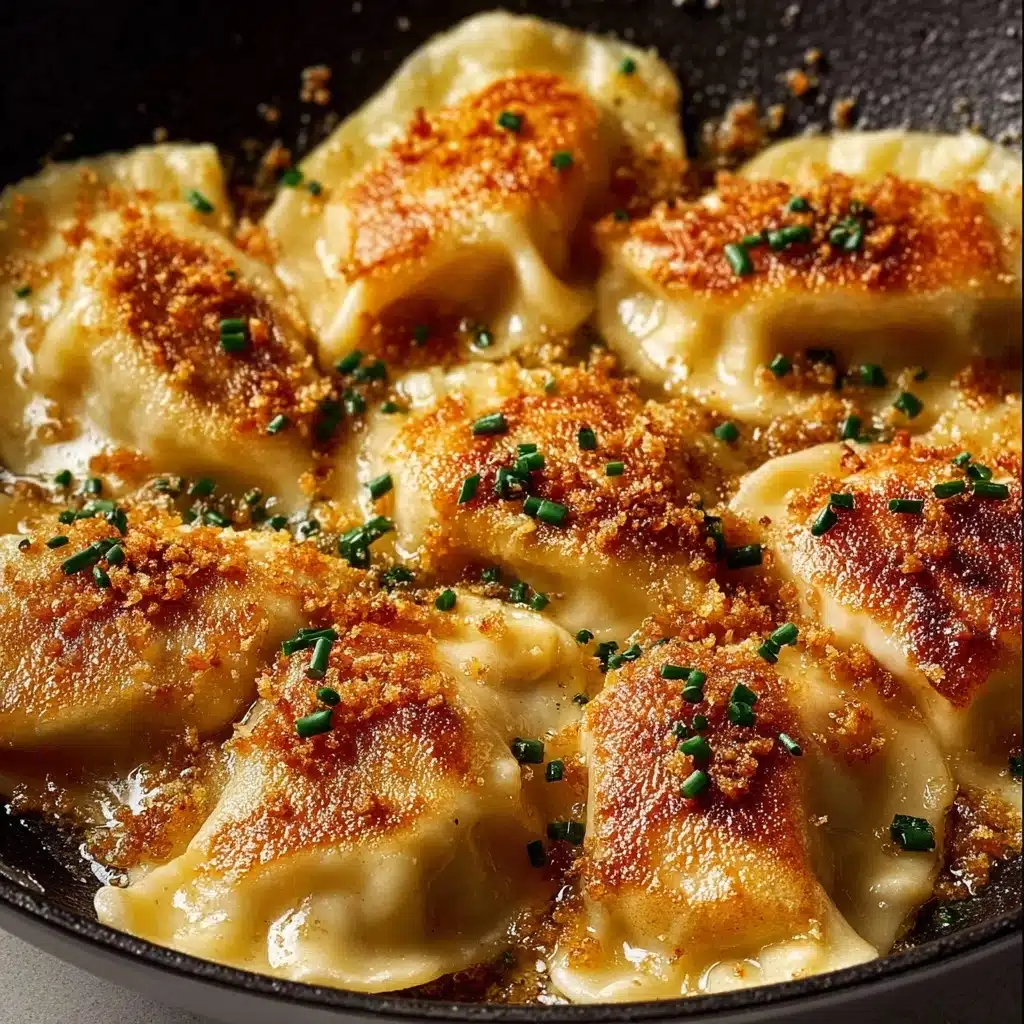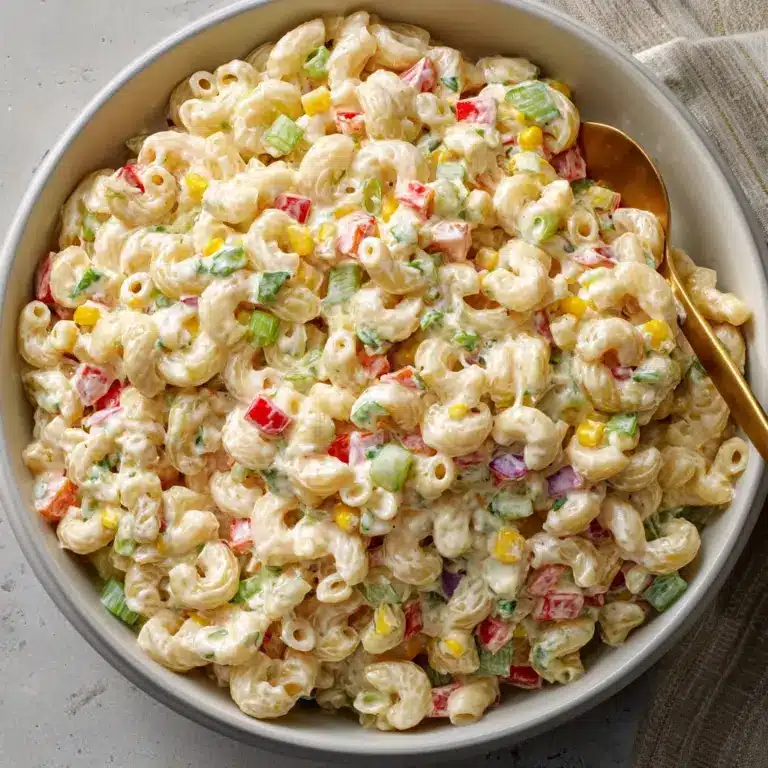Polish Dumplings: A Guide to Authentic Pierogi Recipes Recipe
There is something incredibly comforting and satisfying about Polish dumplings, especially when made with love and tradition in mind. Polish Dumplings: A Guide to Authentic Pierogi Recipes invites you to dive into a world of tender dough pockets filled with creamy potatoes and cheese, delivering a warm hug on a plate. This classic dish is simple yet deeply flavorful, perfect for sharing with friends or family as a beloved staple of Polish cuisine. From mixing the dough to savoring the final browned pierogi with a dollop of sour cream, this guide will walk you through creating these delicious dumplings from scratch, ensuring authentic taste and joy in every bite.

Ingredients You’ll Need
Fresh, simple ingredients are the heart and soul of these authentic Polish dumplings, each playing a vital role in crafting the perfect texture and flavor. From the creamy filling to the tender dough, every element is essential.
- All-purpose flour: 3 cups to create a pliable and durable dough that holds the filling perfectly.
- Large egg: Adds richness and helps bind the dough together.
- Warm water: Approximately 1 cup to gently bring the dough ingredients together.
- Salt: 1 teaspoon for flavor in the dough and seasoning throughout.
- Russet potatoes: 2 pounds peeled and quartered, offering a fluffy and smooth base for the filling.
- Farmer’s cheese (Twaróg) or ricotta: 1 cup, lending creaminess and a mild tang to the dumpling filling.
- Grated sharp cheddar cheese (optional): 1/2 cup, adding a rich, flavorful note to the filling.
- Butter: 1/4 cup melted for mixing in the filling, plus more for sautéing and serving.
- Medium onion: Finely chopped and sautéed to sweeten and deepen the filling’s flavor.
- Freshly ground black pepper: To taste, enhancing seasoning and warmth.
- Sour cream: For serving, its cool tang perfectly balances the rich pierogi.
- Crispy fried bacon or onions (optional): Adds texture and a savory punch as a tasty topping.
How to Make Polish Dumplings: A Guide to Authentic Pierogi Recipes
Step 1: Prepare the Potato Filling
Begin by boiling your peeled russet potatoes until they are tender enough to mash seamlessly. This foundational step is crucial because smooth, lump-free potatoes mean a velvety filling that pierogi fans will love. Drain and mash them back in the pot for easy mixing.
Step 2: Sauté the Onions
Gently cooking finely chopped onions in melted butter until they become soft and translucent brings out a hint of sweetness that enhances the filling’s depth. Avoid browning to keep the flavor light and mellow.
Step 3: Combine the Filling Ingredients
Mix the mashed potatoes with farmer’s cheese or ricotta, optional cheddar, the sautéed onions, and melted butter. Season generously with salt and freshly ground black pepper. Cooling the filling at this point helps prevent the dough from becoming soggy when filled.
Step 4: Make the Dough
Whisk flour with salt, then create a well for the egg and warm water. Slowly combine them until a dough ball forms, adjusting water or flour to get a firm yet pliable texture. Knead thoroughly to develop structure, then wrap and rest the dough to relax the gluten—this ensures easier rolling later on.
Step 5: Roll Out and Cut the Dough Circles
Divide the dough and roll it thin but sturdy on a floured surface. Use a cookie cutter or glass to cut neat circles, re-rolling scraps as needed. This step sets the stage for uniform pierogi that cook evenly.
Step 6: Fill and Seal the Pierogi
Place a teaspoon of filling in each dough circle’s center. Fold over into a half-moon and firmly pinch edges closed. Sealing well is key to trapping the filling during cooking, plus crimping edges adds a charming touch.
Step 7: Boil the Pierogi
Bring a salted large pot of water to a rolling boil. Cook the pierogi gently in batches, waiting for them to float plus an additional two to three minutes to ensure the dough cooks through perfectly.
Step 8: Optional Sauté for Extra Flavor
For a golden, buttery finish, lightly fry the boiled pierogi in melted butter until they develop a crispy, browned exterior. This step is recommended for that irresistible restaurant-quality touch!
How to Serve Polish Dumplings: A Guide to Authentic Pierogi Recipes

Garnishes
Topping your pierogi with melted butter and a generous dollop of sour cream instantly lifts the dish to another level. Add crispy fried bacon or onions if you’re feeling indulgent—these garnishes bring a delightful crunch and smoky flavor contrast.
Side Dishes
While pierogi can shine as a meal on their own, pairing them with fresh, lightly dressed greens or a bowl of clear broth soup creates a balanced, satisfying feast. The freshness of salad helps cut through the richness of the dumplings beautifully.
Creative Ways to Present
Try serving pierogi family-style on a rustic wooden board garnished with fresh herbs such as parsley or dill for a vibrant pop. Alternatively, layering them in a casserole dish with caramelized onions and cheese baked on top makes for a comforting, crowd-pleasing presentation.
Make Ahead and Storage
Storing Leftovers
Once cooled, place leftover pierogi in an airtight container and refrigerate for up to three days. This holds the texture well so you can enjoy them as a quick meal later.
Freezing
To freeze, arrange uncooked pierogi in a single layer on a baking sheet and freeze until solid. Transfer to a freezer-safe bag and freeze for up to two months. This method keeps them from sticking together and allows you to cook fresh portions as needed.
Reheating
For best results, gently reheat refrigerated or frozen pierogi by pan-frying or boiling them briefly until warmed through. Microwaving is convenient but may soften the dough excessively, so use it as a last resort.
FAQs
Can I use different fillings for pierogi?
Absolutely! While this guide focuses on the classic potato and cheese filling, pierogi can be stuffed with a variety of ingredients like mushrooms, sauerkraut, meats, or fruits, each offering a different but equally delicious experience.
What type of cheese works best for the filling?
Traditional Polish pierogi often use farmer’s cheese called Twaróg, which is slightly tangy and crumbly. If unavailable, ricotta cheese works well as a substitute, especially when drained well to avoid sogginess.
Can I make the dough without eggs?
Yes, but the egg helps strengthen the dough and improve elasticity. If you prefer an egg-free dough, consider adding a little extra water and kneading thoroughly to develop the gluten structure for pliability.
How thin should I roll the dough?
Rolling the dough to about 1/8 inch thickness is ideal; thin enough for tender bites but sturdy enough to hold the filling securely during boiling.
Is it safe to freeze cooked pierogi?
It’s best to freeze pierogi before cooking to maintain texture. Cooked pierogi can be frozen but might become softer upon reheating. If freezing cooked pierogi, reheat gently to avoid breaking apart.
Final Thoughts
There is something truly special about making pierogi from scratch, bringing a slice of Polish tradition right into your kitchen. I hope this Polish Dumplings: A Guide to Authentic Pierogi Recipes inspires you to roll up your sleeves, get creative with fillings, and savor the joy that comes from each tender, flavorful dumpling. Whether for a festive gathering or a cozy night in, homemade pierogi never fail to warm the heart and delight the palate. Give it a try—you won’t regret it!
PrintPolish Dumplings: A Guide to Authentic Pierogi Recipes Recipe
This authentic Polish pierogi recipe offers a traditional combination of tender dumpling dough filled with a creamy mixture of mashed potatoes and farmer’s cheese. These cherished Eastern European dumplings are perfect boiled and optionally pan-fried for a crispy finish, served with sour cream and crispy fried onions or bacon for an irresistible comfort food experience.
- Prep Time: 40 minutes
- Cook Time: 25 minutes
- Total Time: 1 hour 5 minutes
- Yield: Approximately 40 pierogi 1x
- Category: Main Dish, Dumplings
- Method: Boiling, Optional Pan-Frying
- Cuisine: Polish, Eastern European
- Diet: Vegetarian
Ingredients
Dough Ingredients
- 3 cups all-purpose flour, plus more for dusting
- 1 large egg
- 1 cup warm water (approximately, adjust as needed)
- 1 teaspoon salt
Filling Ingredients
- 2 pounds russet potatoes, peeled and quartered
- 1 cup farmer’s cheese (Twaróg), or ricotta cheese (drained well) as a substitute
- 1/2 cup grated sharp cheddar cheese (optional)
- 1/4 cup butter, melted
- 1 medium onion, finely chopped
- Salt and freshly ground black pepper to taste
Topping & Serving
- Butter, melted
- Sour cream
- Crispy fried bacon or onions (optional)
Instructions
- Cook the Potatoes: Place peeled and quartered potatoes in a large pot, cover with cold salted water, and bring to a boil. Reduce heat and simmer for 15-20 minutes until tender and easily pierced with a fork.
- Mash the Potatoes: Drain potatoes thoroughly, return to the pot, and mash until smooth and lump-free using a potato masher or ricer.
- Sauté the Onions: Melt 2 tablespoons butter in a skillet over medium heat. Add finely chopped onion and cook gently for 5-7 minutes until soft and translucent without browning.
- Prepare the Filling: Combine the mashed potatoes with sautéed onions, farmer’s cheese (or ricotta), cheddar cheese if using, remaining melted butter, salt, and black pepper. Mix thoroughly and adjust seasoning to taste.
- Cool the Filling: Let the filling cool completely before use, refrigerating if necessary, to prevent dough sogginess during filling.
- Make the Dough: In a large bowl, whisk together flour and salt. Create a well in the center; add the egg and about 3/4 cup warm water. Gradually incorporate flour with wet ingredients, adding more water as needed until a smooth, elastic dough forms.
- Knead the Dough: Turn dough onto a floured surface and knead for 8-10 minutes until pliable and non-sticky, adjusting flour or water incrementally as necessary.
- Rest the Dough: Wrap the dough in plastic wrap and let it rest at room temperature for at least 30 minutes to relax gluten, or refrigerate for up to 2 hours.
- Roll Out Dough: Divide the dough in half and roll one half to about 1/8 inch thickness on a floured surface.
- Cut Dough Circles: Use a 3-inch cookie cutter or glass to cut circles, gather scraps and reroll as needed.
- Fill Pierogi: Place a teaspoon of filling in the center of each dough circle, being careful not to overfill.
- Seal Pierogi: Fold each circle over the filling to form a half-moon shape and pinch edges tightly to seal. Crimp edges with a fork for decoration and security.
- Prepare for Cooking: Place filled pierogi on a lightly floured baking sheet to prevent sticking.
- Boil Pierogi: Bring a large pot of salted water to a rolling boil. Add pierogi in batches without overcrowding.
- Cook Until Done: When pierogi float to the surface, cook for an additional 2-3 minutes to ensure dough is fully cooked.
- Drain Pierogi: Remove pierogi with a slotted spoon and drain well.
- Optional Pan-Fry: For extra flavor and crispness, sauté cooked pierogi in melted butter over medium heat until golden brown on both sides.
- Serve: Serve hot, topped with melted butter, sour cream, and optional crispy fried bacon or onions. Garnish with fresh parsley or dill if desired.
Notes
- Adjust water quantity when making dough depending on flour humidity and type for perfect dough consistency.
- Allowing the filling to cool prevents dough from becoming soggy and makes filling easier.
- Sautéing pierogi in butter after boiling adds texture and rich flavor but is optional.
- Use a potato ricer for the smoothest filling texture.
- Store leftover pierogi uncooked in the freezer with parchment paper between layers; cook straight from frozen.
- Substitute farmer’s cheese with well-drained ricotta if unavailable, though flavor and texture may differ slightly.
Nutrition
- Serving Size: 4 pierogi (approx. 180g)
- Calories: 320 kcal
- Sugar: 3 g
- Sodium: 350 mg
- Fat: 12 g
- Saturated Fat: 7 g
- Unsaturated Fat: 4 g
- Trans Fat: 0 g
- Carbohydrates: 44 g
- Fiber: 3 g
- Protein: 9 g
- Cholesterol: 55 mg
Keywords: Polish pierogi, pierogi recipe, potato dumplings, Eastern European dumplings, homemade pierogi, pierogi filling, comfort food, traditional Polish cuisine








